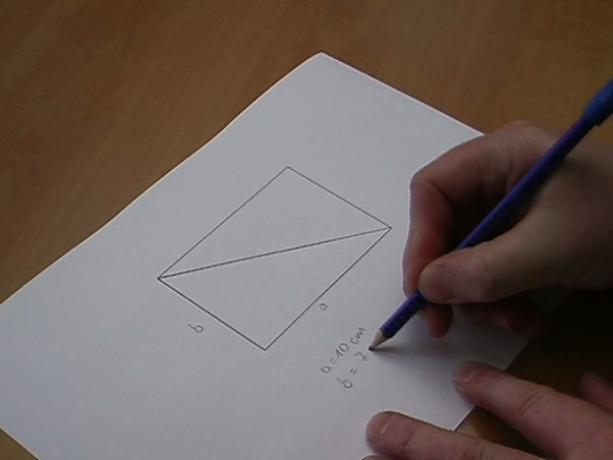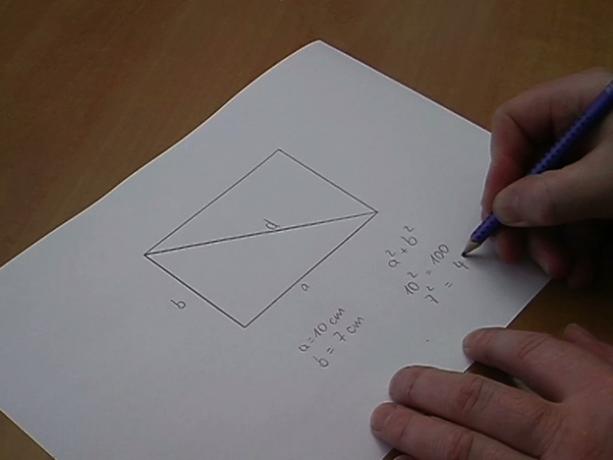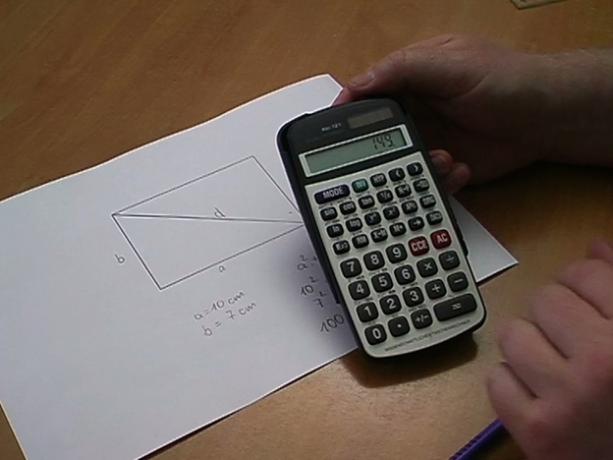VIDEO: How to calculate the diagonal of a rectangle
Calculating a rectangle is one of the simpler tasks in the mathematics. Both the area and the perimeter are quickly calculated. It is a little more difficult to calculate the diagonal of a rectangle.

This is how the diagonal of a rectangle is calculated
- The diagonal of a rectangle is calculated using the Pythagorean theorem. That sounds a bit complicated at first, but it isn't. The Pythagorean theorem says that in a right triangle the sum of the two leg squares is equal to the hypotenuse square.
- Now you are probably wondering what a right triangle has to do with a rectangle? But that is answered quickly. If you draw a diagonal in a rectangle, you will get two identical ones Triangles.
- The length and width of the rectangle form the two legs and the diagonal represents the hypotenuse.
- You then only need to calculate the length and width of the rectangle as a square and add these two values. You then only need to pull the root of the result. Then you have calculated the length of the diagonal.
Calculate deltoid diagonals - this is how it works in the dragon square
In order to be able to determine the diagonals of the dragon square, it is necessary to use the sentence ...

An example for calculating the diagonals in the rectangle
- Imagine you have a rectangle with a side length a of 10 cm. The side length b should be 7 cm in this example. The diagonal is generally denoted by the letter d.
- In this example the diagonal d would be the square root of a² + b². 10² = 100 and 7² = 49. That means the diagonal would be as long as the square root of 149. The diagonal would therefore be 12.206 cm long.
- How many places after the decimal point the diagonal of a rectangle is calculated depends on the respective requirement.
Using Pythagorean theorem to calculate the diagonal of a rectangle will give you a much more accurate result than measuring it.




